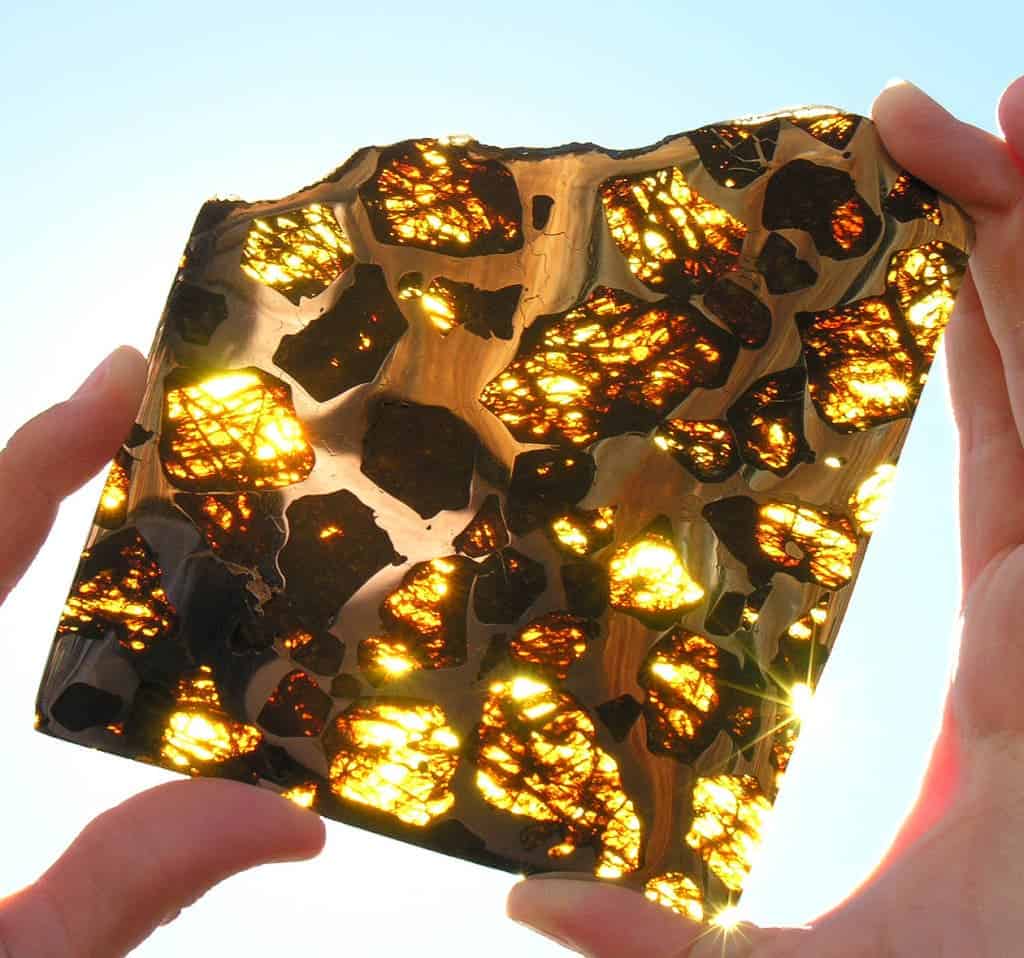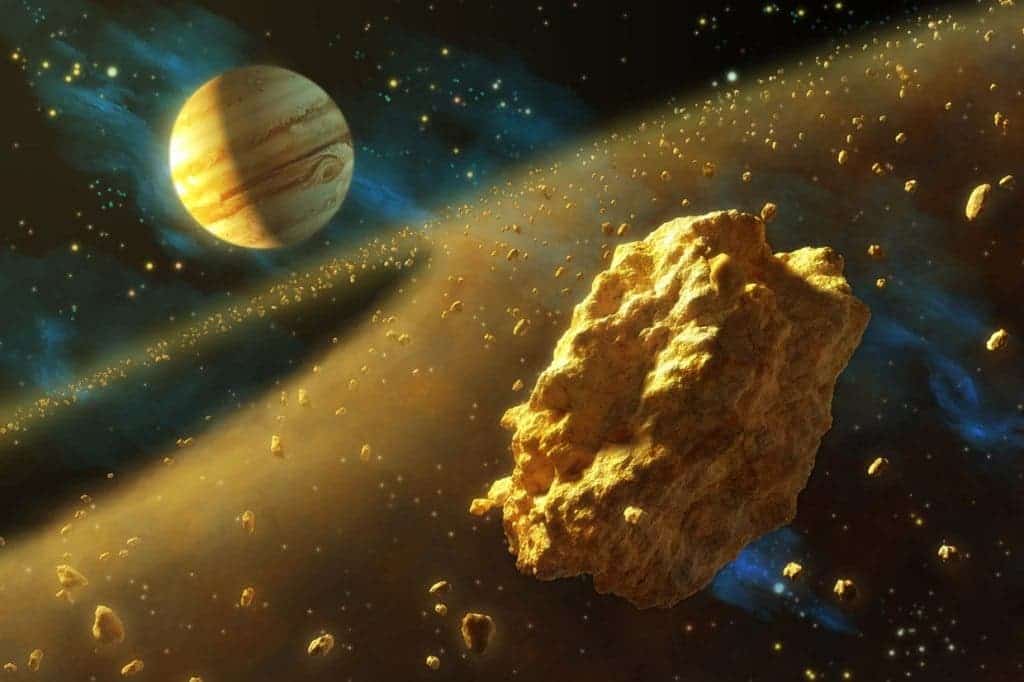The magnetic field of asteroids lasted for a surprisingly long time, a new research has found. According to it, it may have lasted for millions and millions of years – long enough to potentially protect life forms hitching through the solar system.
Asteroids and Life

Asteroids are considered to be minor planets, with the larger ones even being called planetoids. There are millions of asteroids in our Solar System, resulting from a time when the planets were still forming; they are left overs from a planet that failed to form (at least most of them). The large majority of known asteroids orbit in the asteroid belt between the orbits of Mars and Jupiter, but there are other asteroid families outside of that.
Asteroids are interesting for scientists because they contain traces of amino acids and other organic compounds. Some speculate that asteroids may have seeded life on Earth with these organic compounds, or perhaps even bring life to Earth. The main problem with this hypothesys is that asteroids don’t have a magnetic field, and therefore there’s nothing to protect any potential asteroid life from the solar radiation. But according to a new study out today, magnetic fields like Earth’s may have been much more common in the early stages of the solar system. James Bryson of the University of Cambridge reports in the journal Nature that asteroids had magnetic fields for millions or tens of millions of years, long enough to potentially protect hitchhiking life. This idea will fundamentally change our understanding of asteroid evolution.
“The fact that you can get this very efficient, very long-lived magnetic activity on asteroids is really going to change the perspective on how we think these things evolved,” Bryson says. “And from an even wider perspective, I think it’s also becoming incredibly apparent that asteroids in many ways are just small, sped-up versions of our own planet.”

Going to the Core
The discovery didn’t come easy. The team used a giant X-ray microscope, called a synchrotron, studying the magnetic cores of meteorites that crashed into Earth. They focused specifically on pallasites, iron-and-nickel meteorites believed to originate from an ancient rocky body about 250 miles (400 kilometers) wide. Pallasites are a relatively rare type of mineral, consisting of lovely looking crystals of olivine. So far, only 61 pallasites have been recovered on Earth.
The asteroids for this study were gathered in Argentina. Tiny particles, smaller than one thousandth the width of a human hair, trapped within the metal still carried the “signature” of the earlier magnetic field.
After gathering enough data, they implemented it into a computer model which not only extrapolates what the asteroid’s magnetic field looked like, but also how it evolve through time.
”We’re taking ancient magnetic field measurements in nanoscale materials to the highest-ever resolution in order to piece together the magnetic history of asteroids,” study lead author James Bryson, a Ph.D. student at Cambridge University in England, said in a statement. “It’s like a cosmic archaeological mission.”
The problem is that we don’t fully understand how planetary magnetic fields form and evolve. The Earth’s own magnetic field is still a bit of a mystery.
“Ideas about how the Earth’s core evolved through [our planet’s] history are really changing at the moment,” lead researcher Dr Richard Harrison, from the University of Cambridge, told BBC. “We believe that Earth’s magnetic field is linked to core solidification. Earth’s solid inner core may have started to form at very interesting time in terms of the evolution of life on Earth. By studying an asteroid we get to see this in fast forward. We can see the start of core solidification in the magnetic records as well as its end, and start to think about how these processes work on Earth.”
Earth will eventually lose its magnetic field too, but it will take a huge period of time. Asteroid, being smaller, lose it much quicker.
“Since asteroids are much smaller than Earth, they cooled much more quickly, so these processes occur on a shorter timescales, enabling us to study the whole process of core solidification.”

We may in fact be dealing with a different formation mechanism for asteroids. Bryson thinks it may work like this:
When the temperature of the core lowers enough, it starts to solidify. Most of the stuff that makes up this core is metal (mostly iron and nickel,) but there are also a couple of really light elements mixed in. As the metal slowly solidifies around these light elements, the light elements transform into liquid, and push outwards from the core. And it’s the convection that results from that liquid moving upward that creates the magnetic field.”
Hitchhiking on an Asteroid
Aside from changing our perspective on asteroid, this may have huge implications for the panspermia hypothesis. Could asteroids have actually seeded *or brought) life to Earth? As promising as it may sound, this theory is not direct evidence supporting that theory. If anything, this study makes it a bit more possible… but there’s very little concrete evidence backing panspermia up. Researchers were very careful to indicate that this is still very much an open question, one which we have yet to find an answer, and probably won’t settle in the near future. Still, this is an indirect evidence which shows that it just might be possible.

“Obviously Earth’s magnetic field has been linked to life on the Earth. And if magnetic fields are crucial for life, the increased magnetic activity in the solar system helps come up with a cohesive or coherent story of life in the solar system.”
Other researchers were excited by these results. Prof Wyn William, from the University of Edinburgh, who was not involved in the study, commented:
“To be able to get a time stamp on these recordings, to get a cooling rate and the time of solidification, is fantastic. It’s a very nice piece of work.”
Journal Reference: James F. J. Bryson, Claire I. O. Nichols, Julia Herrero-Albillos, Florian Kronast, Takeshi Kasama, Hossein Alimadadi, Gerrit van der Laan, Francis Nimmo & Richard J. Harrison. Long-lived magnetism from solidification-driven convection on the pallasite parent body. Nature517,472–475doi:10.1038/nature14114






